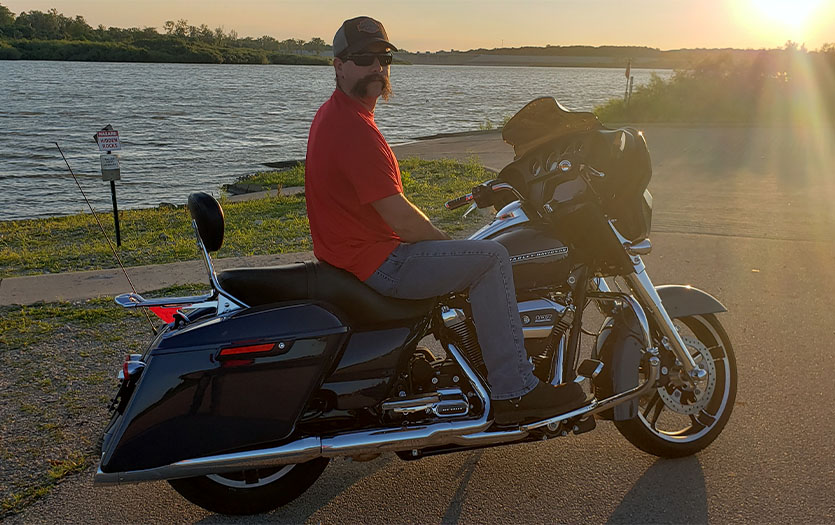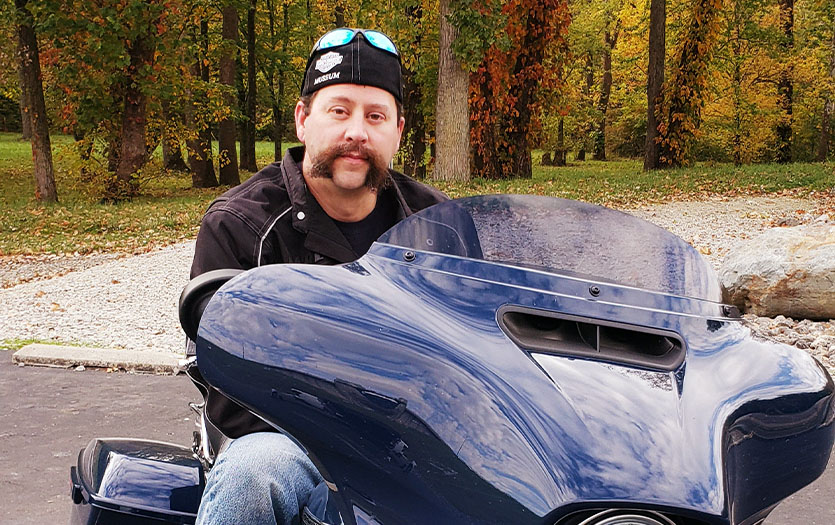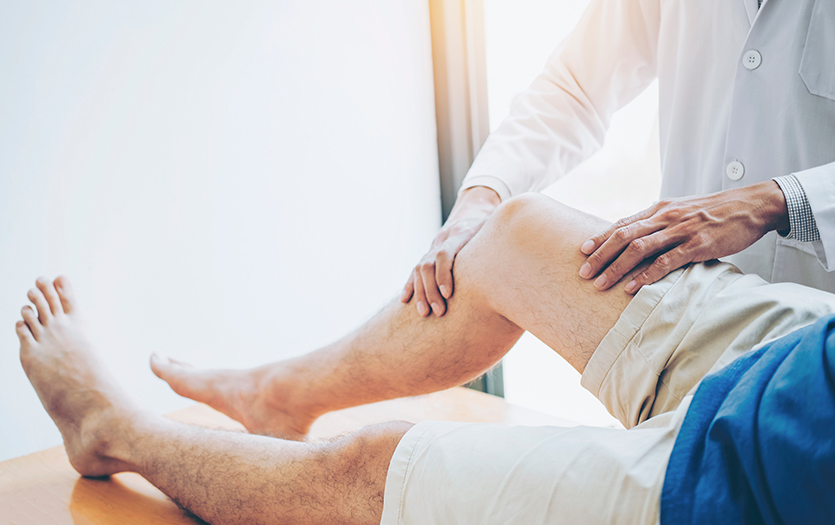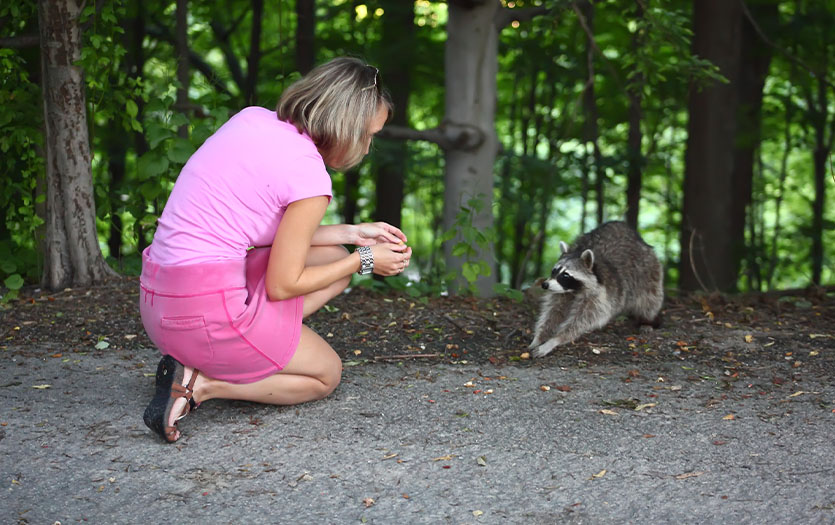
For business development director, volunteer firefighter, church audio and video coordinator, and avid motorcyclist David Rittmeyer, chronic back pain became an obstacle to engaging in the activities he loves. In 2024, David's ongoing back pain progressed from an intermittent annoyance to nearly unbearable. Seeking relief, he turned to Micah Smith, MD, Orthopedic Surgery. We asked David to take us through his journey toward healing.
Living with back pain
As David's pain worsened, his ability to function day to day began to decline. "I had a lot of nerve pain going down my leg. Sometimes, while walking, it felt like I might drop or fall because my leg might give out. But then, a minute later, I felt fine," David said. With worsening symptoms, more frequent pain and tingling in his toes, David consulted with his primary care provider. X-rays and an MRI revealed he had a herniated disc.
At his provider's recommendation, David explored conservative treatment methods, including chiropractic care and physical therapy at Adams Memorial Hospital. Despite his efforts, the pain persisted, leading him to pursue options for surgical intervention. A family friend and physical therapist suggested that he consult Dr. Smith.
The initial surgery
In July 2024, David underwent an open discectomy performed by Dr. Smith. The procedure involved partially removing the herniated disc to alleviate pressure on the nerves. While the surgery addressed the immediate issue, David experienced muscle soreness and stiffness during recovery.
Unfortunately, in a rare but not uncommon complication, the remaining disc material slipped, causing the herniation to recur and leaving David in worse pain than before. "My pain went from a 6 or 7 off and on before the surgery to an 8, 9 or occasional 10 after it," David said.
Hesitant to endure another operation, he sought a second opinion. "I did what I thought was prudent. I spoke with another surgeon, and when he looked at everything, he told me Dr. Smith did a great job. Just sometimes, the disc will bulge back out."
Studies show this irregular complication occurs in less than 20% of cases and may result from factors like pre-existing degenerative disc disease, improper lifting techniques or too much activity too soon. David admitted he might have pushed himself too hard after the first surgery but resolved to be more cautious going forward.
The turning point
In September, two months after his initial procedure, David returned for a second surgery. This time, Dr. Smith employed a minimally invasive technique and the results were night and day.
"After the first surgery, I needed help with everything," David said. "With the second surgery, after the anesthesia wore off, I got myself into the wheelchair, got out and into my wife's vehicle. I walked myself inside and had no issues or pain."
The recovery process was going smoothly. David's surgery was on a Thursday, and by Friday evening, he felt as if he no longer needed his pain medication. However, his wife and family friend encouraged him to keep resting and take the medications as prescribed.
By Sunday, his pain was nearly non-existent. " I felt good. So, I went to church. I didn't take my pain meds, but I put the pill bottle in my jacket just in case," he said. David took one more dose to help with the minor discomfort he felt that evening and hasn't needed the pain medication since.
On the road again
In a follow-up appointment with Dr. Smith, David shared his astonishment at the speed of his recovery compared to the first procedure. Dr. Smith offered this explanation of the differences between the two operations:
"With minimally invasive surgeries, there's less retraction on the muscle compared to open surgeries. The more we retract the muscles, the more soreness and stiffness the patient experiences. We tend to see quicker recoveries and less pain after surgery with less retraction. Additionally, because the technique is less invasive, there's usually less blood loss for the patient, which can contribute to faster healing. Altogether, these factors typically lead to a shorter hospital stay, quicker recovery after surgery and reduced reliance on pain medications or narcotics."
David said the worst part of the second surgery was that he couldn't rely on pain as a measurement for his recovery and had to be more mindful of his post-operative instructions.
Now, David is back to helping his community as a volunteer firefighter and riding his motorcycle with ease. "Being off and not able to respond to emergencies was torture," he said. "But now I'm back, and it feels great to help my neighbors again."

Final thoughts
David recommends anyone considering surgery for a herniated disc speak with Dr. Smith. "I could not recommend him highly enough. There is no chance I could ever give him enough accolades for how well the second procedure went. It's just that great," David said. "I'm speechless, and I tell everybody about it."
To schedule orthopedic care in Allen County, call Ortho NorthEast at 260-484-8551, request an appointment here, or visit this page to find orthopedic care outside of Allen County.



